Introduction to Behavior -- Biology 4900
Faculty Index Page
James K Adams, jadams@daltonstate.edu
This is the second time this course is being offered, so be aware that we are still working out the kinks! We intend on making this a fun learning experience for
all, including us!
Remaining tests!
Test 3 -- October 30, 2024
Test 4 -- November 18, 2024
Review Sheets:
Lecture:
Test 1:
Review sheet 1
Review sheet 2 -- plant
movement (by Hussein Mohamed)
Review sheet 3 -- various invertebrate
phyla
Review sheet 4 -- mollusks
(by John Lugthart)
Review sheet 5 -- non-insect
arthropods
Review sheet 6 -- insects
Test 2:
Review sheet 9 -- amphibians
Projectable images/videos for lecture:
Non-animal behavior:
Paramecium -- feeding
Slime
mold, Dictyostelium discoideum -- from
https://www.researchgate.net/publication/22897702
Genetic analysis of phototaxis in Dictyostelium by Paul R. Fisher
Plant movements: Dr. Hussein
Mohamed's
Powerpoint is available on Georgia View, under
Content: Guest
Presentations
Sensitive fern --
https://www.youtube.com/watch?v=BLTcVNyOhUc
Carnivorous plants:
Venus fly trap catching yellow jackets --
https://www.youtube.com/watch?v=sgsgM1CRP5A
Sundew --
https://www.youtube.com/watch?v=D4kBrsyWhS4
Invertebrate behavior:
Porifera --
filter feeding,
reproduction
Cnidaria --
anemone responses,
jellyfish
blooms/reproduction
Ctenophora -- comb jelly
bioluminescence/feeding
Platyhelminthes --
sensation/feeding
Nematoda --
parasitic types
Annelida --
marine polychaete types,
fan/tube worm images, Bobbit worm
feeding
Onycophora -- prey capture;
image from La Selva, Costa
Rica, March, 1985
Echinodermata
--
movement/prey capture,
sea cucumber behavior
Chordates --
salp behavior (free
living tunicates)
Molluscs: John Lugthart's
Powerpoint is available on Georgia View,
under Content: Guest Presentations
Octopus
paper
Snail paper
Arthropods:
Newest understanding of arthropod relationships
Non-insect arthropod videos/images
Chelicerata videos:
Pycnogonids (sea spiders)
Horseshoe crab spawning
and egg-laying
Spider web spinning
Jumping spider
(Peacock spider) predator avoidance, mating
Larval questing in
Ticks
Vinegaroon
Scorpion prey capture
(and ultraviolet glow) . . . AND the importance of hairs
Camel spider (Solifugidae)
versus Millipede
Myriapod videos
Millipede versus Camel Spider (see above)
Millipede cyanide defense
Prehistoric millipede image
Centipede versus
Grasshopper mouse
Crustacea videos
Snapping (Pistol) Shrimp
Mantis "Shrimp"
(Stomatopoda) with hermit crab
Filter feeding in
barnacles
Isopod (marine)
Insect
videos/images:
Coloration, chemical
defense, and deception
Vertebrate - Insect interactions: Coloration -- crypsis, aposematism,
mimicry
A mantis turns the tables
Insect -
Insect interactions: phoresy, predation, parasitism (parasitoids)
Plant - Insect interactions:
Pollination
Darwin's predicted
hawkmoth
Deceived bees/wasps
Rafflesia image
Parnassius sphragis image
Heliconius
charitonia butterflies roosting
Honeybee Dance Test
Vertebrate Behavior:
Amphibian videos/images
Caecilians -- maternal
care
Giant Chinese Salamander
Hellbender (from National Geographic)
Siren (from Animal Diversity
Web)
Great Crested Newt (from The
Conversation)
Amplexus in Green Tree Frogs
(from
Fredlyfish4)
Poison Dart Frogs
African
Grey Tree Frog foam nest
Mouth/Gastric brooding frogs
Cane Toad
Gliding Tree Frog video
Mammals
Coatimundi
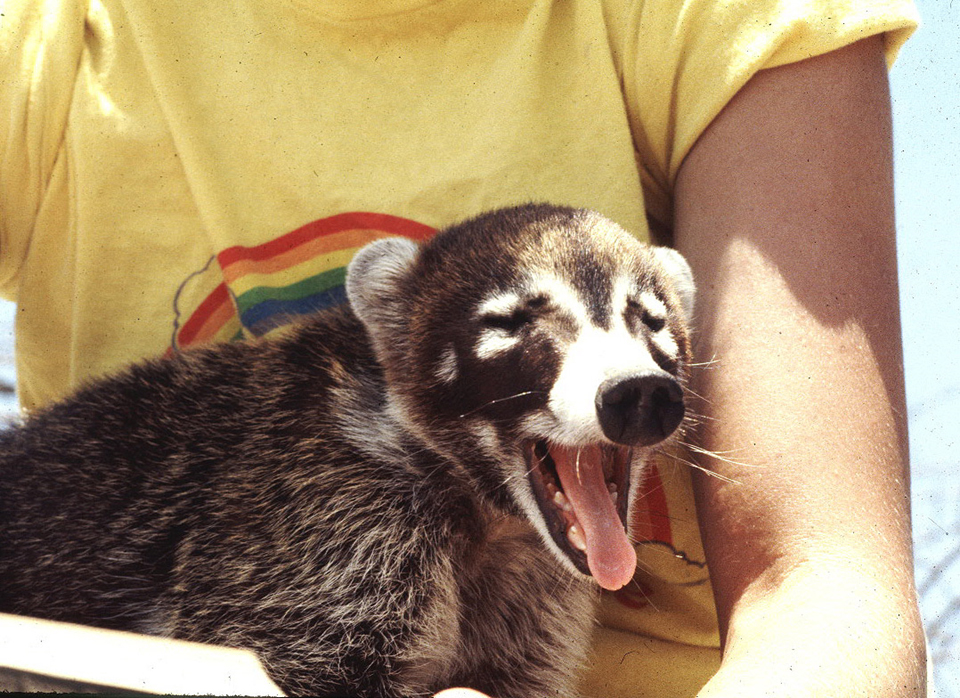
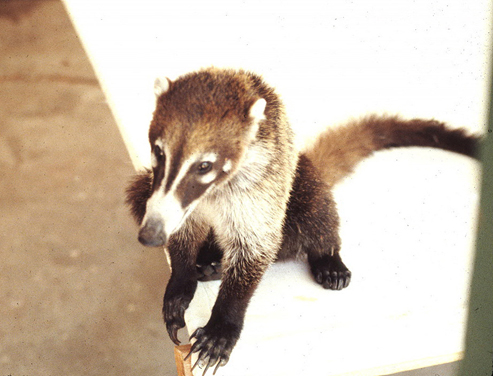
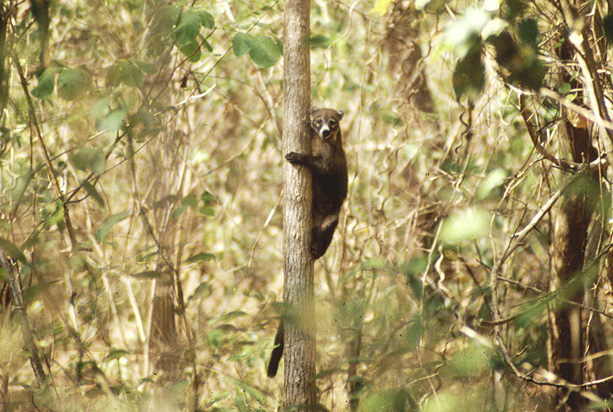
© James Adams, 1985, Palo Verde, Costa Rica
Coati tails
Terrestrial/aerial mammals (Mammals 4 lecture):
BATS
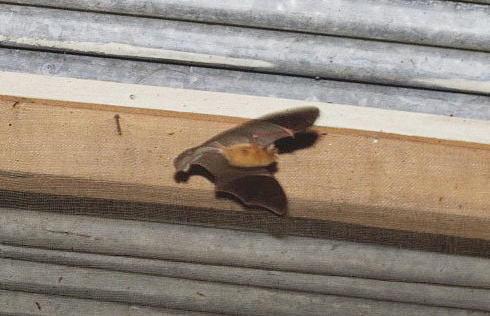
© James Adams, 1985; Pteronotus personatus, Palo Verde, Costa Rica
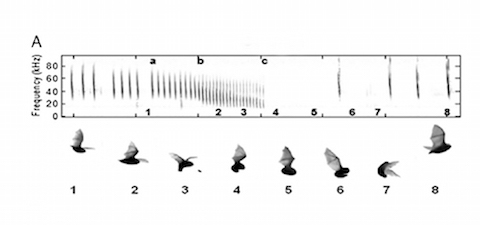
Approach call and uropatagium used to catch prey
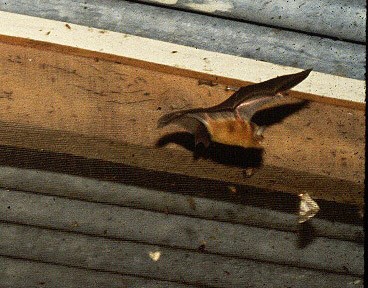
© James Adams, 1985; Pteronotus personatus with Melipotis moth; Palo Verde, Costa Rica
Vampire bats share blood with their friends video
Spectral bat photo - Spectral bat - Wikipedia
Fishing Bat video
Pteropus conspicillatus (flying fox) with baby
Large Herd Animals
Watch This Gazelle Spring Across the African Savanna Like a Pogo Stick - Atlas Obscura
The specialized insect eaters
Orycteropus afer -- Aardvark - Wikipedia
Tamanduá-bandeira_-- Giant Anteater - Wikipedia
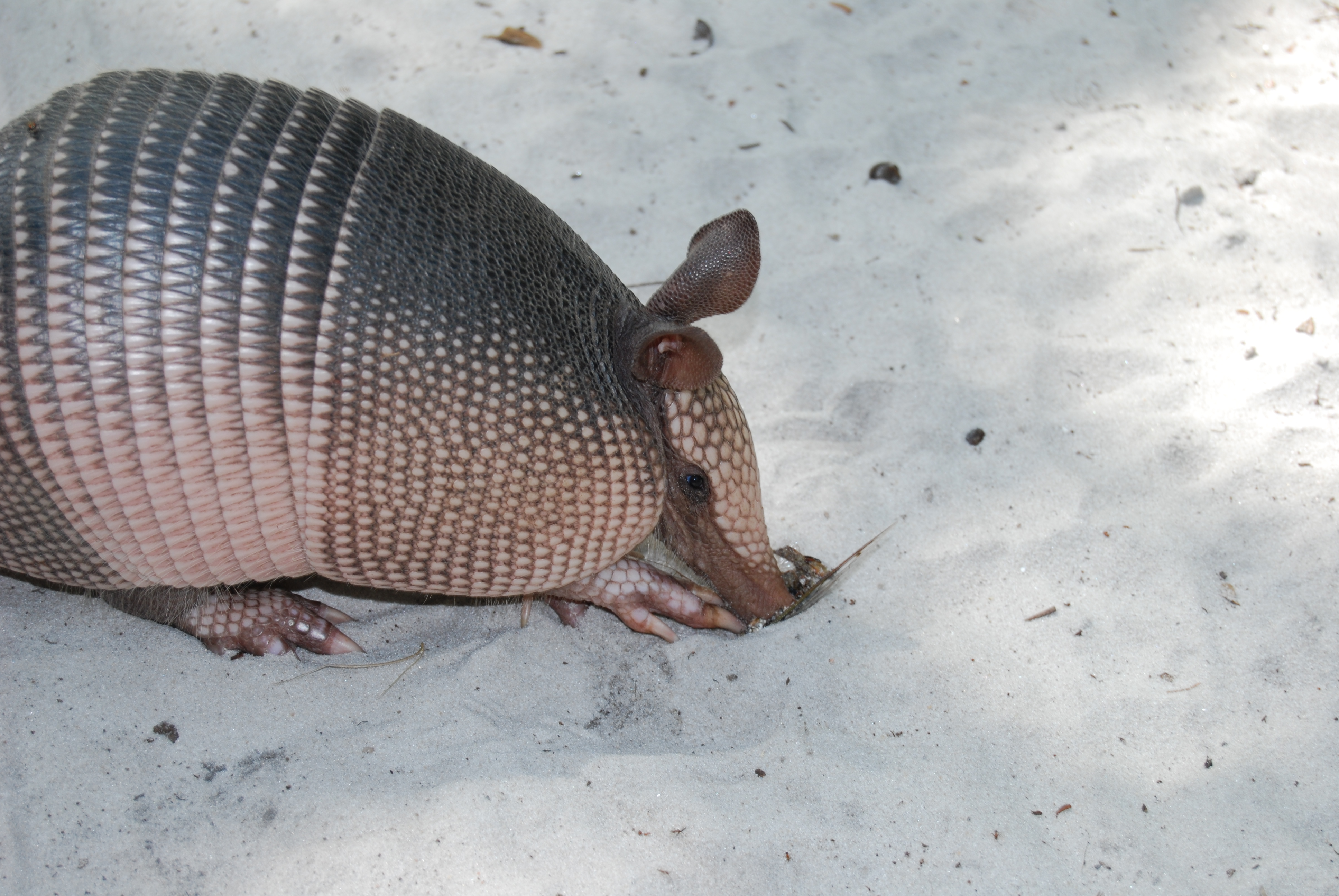
© James Adams, 2022; Nine Banded Armadillo (Dasypus novemcinctus). Sapelo Island, Georgia
Pangolin_- Wikipedia; Manis_temminckii_rolled into a ball - Wikipedia
DESCRIPTION OF THE COURSE:
This course covers behavior, presented in a taxonomic format. We will first look
briefly at behavior in non-animals (prokaryotes, "protists", fungi, plants), and
then continue with a discussion of invertebrates, with particular emphasis on
insects. From there we will continue our discussion in vertebrates, with
particular emphasis on mammals, especially rodents and primates. During all of
our discussions, we will emphasize the importance of evolution in shaping the
behavior of all the organisms we discuss, which means we will focus on behaviors
that significantly increase fitness: finding and getting food, finding mates,
avoiding predation, and the like. Needless to say, there will be a large
number of examples of interesting behavior presented. We intend to use a number
of videos, and examples from personal experience.
COURSE OBJECTIVES: Upon completion of this course, you should be able
to:
- Provide examples of evolutionarily important behavior from a wide variety
of organisms.
- Understand how the production of proteins from DNA in turn is intimately
tied to the evolution of behavior.
- Explain how, even among quite unrelated organisms, certain similar
behaviors occur over and over again in a variety of organisms, because of the
importance of the behaviors to the fitness of the organisms.
TIPS FOR SUCCESS:
This is the second time this course has been taught, and as such, we will be
learning TOGETHER how to best present the material in the course. We will provide you with review
sheets and outlines, which we will include the readings. However, these
handouts may vary widely in detail as we will be having many guest lectures.
Therefore, taking good notes will also be very important to your success, though
we will record the lectures and make them available to you so that you
will have access to all of the information multiple times. And, as is always the
case, if you have a question, ASK!!
Disclaimer Statement
The
page author is solely responsible for the content, and the content does not
necessarily reflect the
views or mission of the College. Dalton State
College does not accept responsibility for the content of sites
accessible
through the Internet, nor does it accept responsibility for the content of
secondary links.





